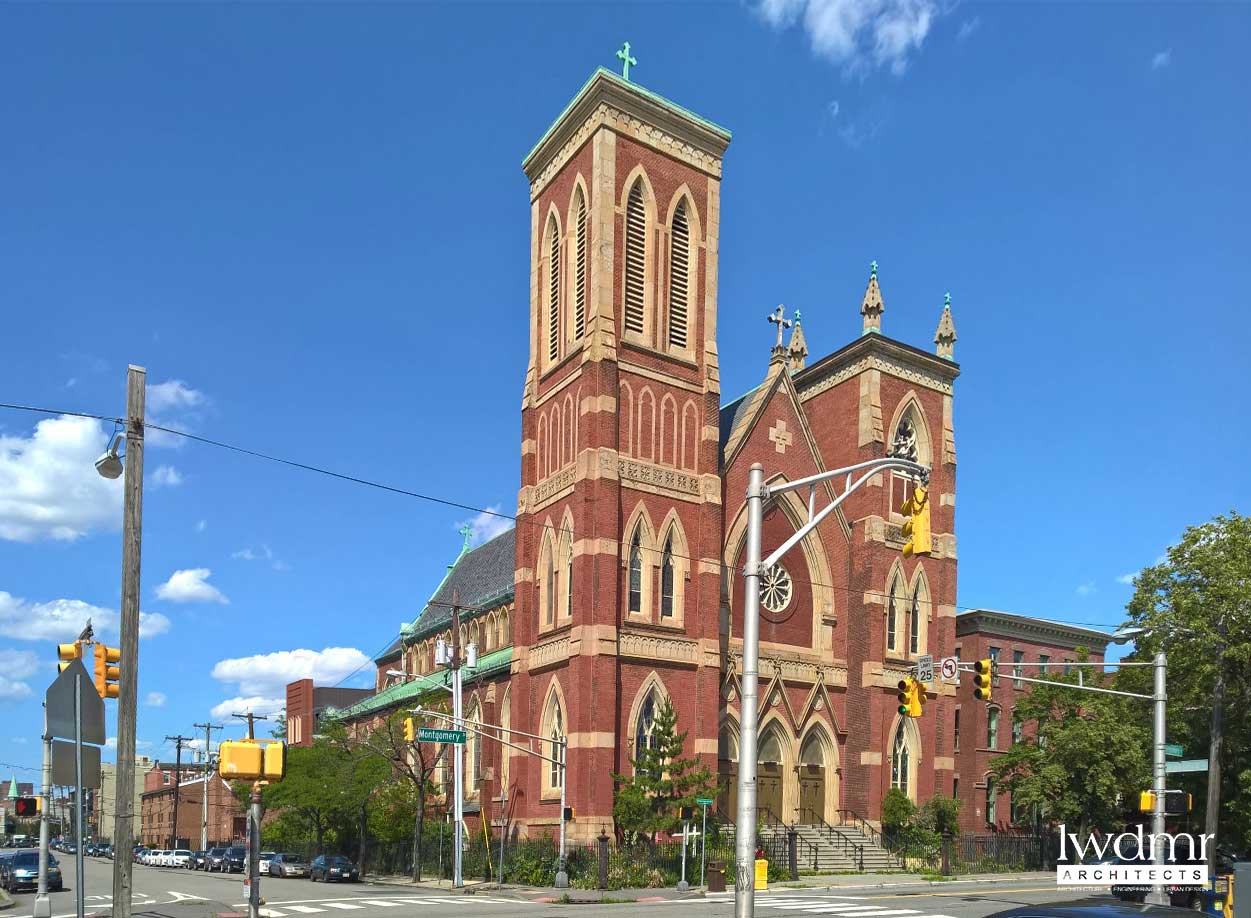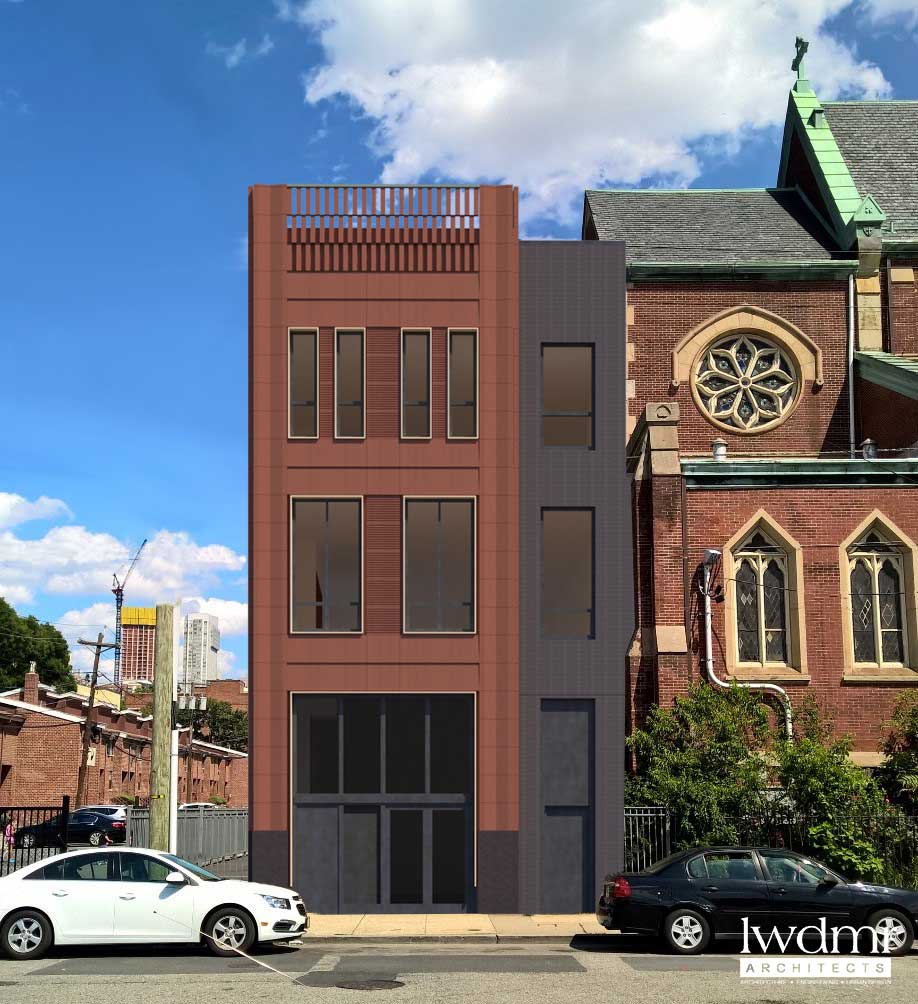
As many religious institutions in New Jersey continue to close or consolidate, the number of churches in need of new use is increasing. Developers in the state, particularly in Jersey City, are beginning to take advantage of this opportunity by proposing adaptive reuse projects for these structures in order to create new housing units.
The latest example of this can be seen at the building previously occupied by St. Bridget’s Roman Catholic Church in Downtown Jersey City’s Ward F. The church, located a few blocks west of Van Vorst Park at 380 Montgomery Street at the corner of Brunswick Street, will be converted into residential development with 38 units. City records show that the Preliminary and Final Major Site Plan for the project by SBJC, LLC, the developer and property owner, was approved by the Jersey City Zoning Board of Adjustment during its meeting on December 12th.

Gabriel Dal’Maso and Eli Martin of Bay Street-based Lindemon Winckelmann Deupree Martin Russell & Associates, PC, better known as LWDMR Architects, are responsible for the design and architecture of this redevelopment effort. Dal’Maso told Jersey Digs that the project includes plans for an addition to be constructed behind the building that will contain mechanical equipment, an elevator, and a stairwell.
“The addition [will be] clad in terracotta panels to match the color of the church’s masonry and a dark ironspot brick to match the slate roof,” Dal’Maso explained.
Plus, should an additional proposal gain the necessary approvals from the New Jersey Department of Environmental Protection, commercial space could potentially be included in the basement of the church.
According to Dal’Maso, many of the church’s interior and exterior features, including most of the stained glass, will remain intact. He added that all of the units will be market-rate rentals, and that there will be 17-studios, 19 one-bedroom apartments, a two-bedroom unit, and a three-bedroom unit.

St. Bridget’s Church was founded in 1869 and moved into this building at 380 Montgomery Street less than 20 years later. By 1910, there were 6,000 congregants, according to The New York Times. However, as the decades went on, the number of members declined to around 650, and the Archdiocese of Newark merged the congregation with four other local churches in 1997. 17 years later, The Jersey Journal reported that Archdiocese had placed the historic structure on the market. In the time since, the building has contained Cathedral Hall, a non-profit event space run by Fourth Street Arts that regularly hosts weddings, concerts, and festivals such as the Jersey City Oddities Market.
This is not the first adaptive reuse project of a former building on the St. Bridget’s campus. Just a few yards away, a rehabilitation of the church’s former school by The Albert Group and RCG Development Group into the 46-unit affordable St. Bridget’s Senior Residences was completed in 2014. Plus, elsewhere in Jersey City, the abandoned St. John’s AME Church in Lafayette is set to be converted into 33 units and the former Bethesda Baptist Church on Mercer Street is being rehabilitated to allow for the construction of 10 units.


